Themed collection Horizons Community Board Collection: Antimicrobial materials and surfaces

Horizons Community Board collection: antimicrobial materials and surfaces
A themed collection on antimicrobial materials and surfaces, guest edited by Materials Horizons and Nanoscale Horizons Community Board members Ignacio Martín-Fabiani and Ignacio Insua.

Mater. Horiz., 2022,9, 1564-1565
https://doi.org/10.1039/D2MH90036J
Graphene oxide and carbon dots as broad-spectrum antimicrobial agents – a minireview
Complex antibacterial mechanisms of graphene oxide and carbon dots.
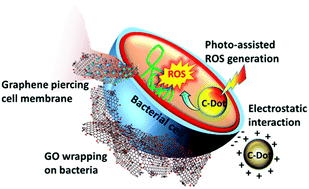
Nanoscale Horiz., 2019,4, 117-137
https://doi.org/10.1039/C8NH00174J
Functional nanomaterials, synergisms, and biomimicry for environmentally benign marine antifouling technology
This review outlines recent progress and strategies for highly efficient, environmentally-friendly marine antifouling technology based on nanomaterials and nanocomposites, as well as synergistic and biomimetic approaches.
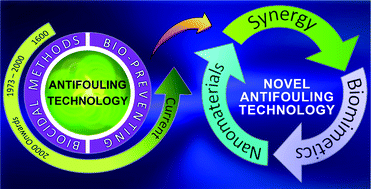
Mater. Horiz., 2021,8, 3201-3238
https://doi.org/10.1039/D1MH01103K
Progress on photocatalytic semiconductor hybrids for bacterial inactivation
Various semiconductor photocatalyst systems for photo-induced bacterial inactivation.
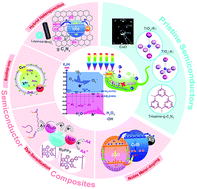
Mater. Horiz., 2021,8, 2964-3008
https://doi.org/10.1039/D1MH00773D
A nano perspective behind the COVID-19 pandemic
Nano-scale interactions are key to understand the SARS-CoV-2 infectious potential and bio–nano sciences can provide hints on viral particles behaviour.
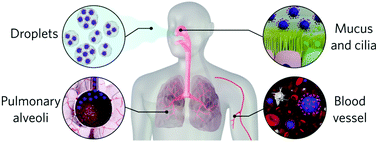
Nanoscale Horiz., 2021,6, 842-855
https://doi.org/10.1039/D1NH00135C
Polydopamine antibacterial materials
This review focuses on the recent progress in polydopamine antibacterial materials, including their structural and functional features, preparation strategies, antibacterial mechanisms, and their biomedical applications.

Mater. Horiz., 2021,8, 1618-1633
https://doi.org/10.1039/D0MH01985B
Engineered two-dimensional nanomaterials: an emerging paradigm for water purification and monitoring
This review aims to comprehensively summarize the significant developments in design strategies, processing approaches, and application-oriented techniques of 2D nanomaterials for water purification and monitoring.
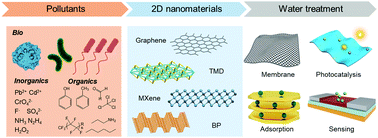
Mater. Horiz., 2021,8, 758-802
https://doi.org/10.1039/D0MH01358G
Interfacial engineering of gold nanoclusters for biomedical applications
Ultrasmall Au NCs have recently emerged as functional bionanomaterials due to their unique physicochemical and theranostic properties. To explore the therapeutic potential of Au NCs and to overcome biological barriers, interfacial engineering approaches are discussed in details.
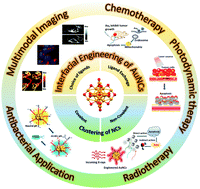
Mater. Horiz., 2020,7, 2596-2618
https://doi.org/10.1039/D0MH00827C
Catalytic chemistry of iron-free Fenton nanocatalysts for versatile radical nanotherapeutics
This review summarizes and discusses the construction of iron-free Fenton nanocatalysts for versatile biomedical applications. The facing challenges and future developments of these iron-free Fenton nanocatalysts for clinical translation are also outlooked.
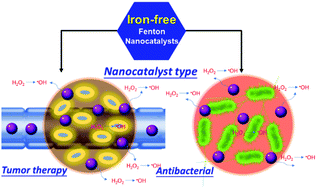
Mater. Horiz., 2020,7, 317-337
https://doi.org/10.1039/C9MH01565E
Selective treatment of intracellular bacterial infections using host cell-targeted bioorthogonal nanozymes
Macrophage-targeted bioorthogonal nanozyme designed to generate antibiotics at the site of infection. Nanozymes had targeted uptake by macrophages through mannose functionalization, then generated antibiotics to specifically kill infectious bacteria.

Mater. Horiz., 2022,9, 1489-1494
https://doi.org/10.1039/D1MH02042K
Hitchhiking probiotic vectors to deliver ultra-small hafnia nanoparticles for ‘Color’ gastrointestinal tract photon counting X-ray imaging
Gastrointestinal (GI) tract is one of the hard-to-reach target tissues for the delivery of contrast agents and drugs. Herein we have used novel hafnia nanoparticles encapsulated in probiotics for GI tract imaging using photon counting color-CT.

Nanoscale Horiz., 2022,7, 533-542
https://doi.org/10.1039/D1NH00626F
Enhanced antibacterial function of a supramolecular artificial receptor-modified macrophage (SAR-Macrophage)
SAR-Macrophage was developed to rapidly recognize E. coli through strong host–guest interactions, thus improving the internalization of E. coli, which subsequently induced M1 polarization of macrophages to kill bacteria.
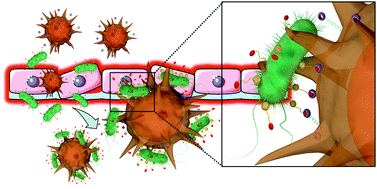
Mater. Horiz., 2022,9, 934-941
https://doi.org/10.1039/D1MH01813B
3D printing of artificial skin patches with bioactive and optically active polymer materials for anti-infection and augmenting wound repair
A printable ink composed of a photoactive cationic conjugated polymer (PPV) and gelatin/alginate/hyaluronic acid was developed for 3D printing artificial skin patches with the biofunctions of anti-infection and augmenting wound repair.
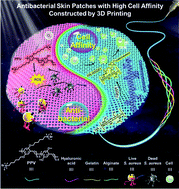
Mater. Horiz., 2022,9, 342-349
https://doi.org/10.1039/D1MH00508A
Erythrocyte-mediated delivery of bioorthogonal nanozymes for selective targeting of bacterial infections
Hitchhiking bioorthogonal nanozymes on red blood cells for selective killing of pathogenic bacterial infections.
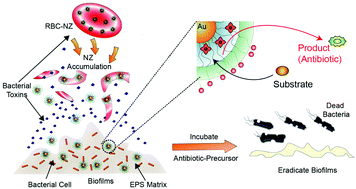
Mater. Horiz., 2021,8, 3424-3431
https://doi.org/10.1039/D1MH01408K
Nanotherapeutics using all-natural materials. Effective treatment of wound biofilm infections using crosslinked nanoemulsions
All-natural cross-linked nanoemulsions provide effective treatment of wound biofilm infections.
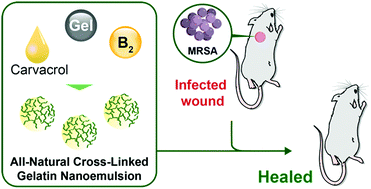
Mater. Horiz., 2021,8, 1776-1782
https://doi.org/10.1039/D0MH01826K
AFM force-clamp spectroscopy captures the nanomechanics of the Tad pilus retraction
We use a novel platform combining force-clamp spectroscopy with a fluorescence-based piliated cell selection to study the nanomechanics and dynamics of the retraction of the Caulobacter crescentus Tad pilus.
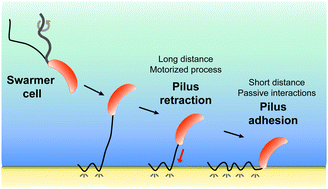
Nanoscale Horiz., 2021,6, 489-496
https://doi.org/10.1039/D1NH00158B
A multifunctional Fenton nanoagent for microenvironment-selective anti-biofilm and anti-inflammatory therapy
FePS3 nanosheets with pH-responsive self-enhanced Fenton activity and ROS scavenging properties, are first explored to realize microenvironment-selective anti-biofilm and anti-inflammatory therapy for bacterial biofilm infections.
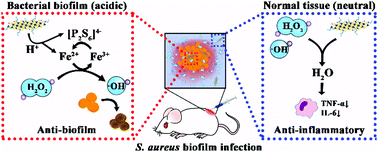
Mater. Horiz., 2021,8, 1264-1271
https://doi.org/10.1039/D0MH01921F
Fusogenic porous silicon nanoparticles as a broad-spectrum immunotherapy against bacterial infections
RNAi-mediated immunotherapy provided by fusogenic porous silicon nanoparticles demonstrates superior therapeutic efficacy against both Gram-positive and Gram-negative bacterial infections compared with first-line antibiotics.
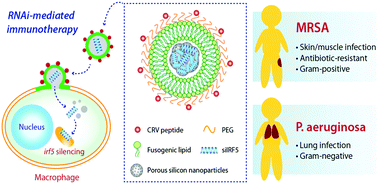
Nanoscale Horiz., 2021,6, 330-340
https://doi.org/10.1039/D0NH00624F
Fast chemical force microscopy demonstrates that glycopeptidolipids define nanodomains of varying hydrophobicity on mycobacteria
We use chemical force microscopy with high spatiotemporal resolution to study the nanoscale distribution of hydrophobicity on living mycobacterial cells.
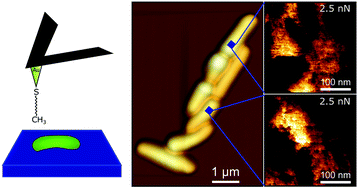
Nanoscale Horiz., 2020,5, 944-953
https://doi.org/10.1039/C9NH00736A
One-step in vivo metabolic labeling as a theranostic approach for overcoming drug-resistant bacterial infections
A bacterial metabolic probe with AIE characteristics shows great potential in in vivo light-up imaging of bacteria and antibacterial therapy.
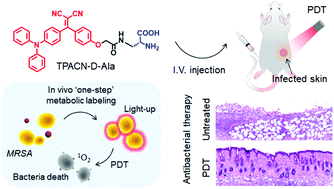
Mater. Horiz., 2020,7, 1138-1143
https://doi.org/10.1039/C9MH01675A
Safer-by-design biocides made of tri-thiol bridged silver nanoparticle assemblies
A tri-thiol bio-inspired ligand triggers thiol-mediated silver nanoparticle assemblies. This novel nanomaterial delivers an amount of Ag(I) sufficient for biocidal activity but no release of AgNPs that makes it a safer solution for future applications.
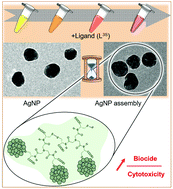
Nanoscale Horiz., 2020,5, 507-513
https://doi.org/10.1039/C9NH00286C
Engineering proteinosomes with renewable predatory behaviour towards living organisms
A bio-inspired proteinosome-based material showed programmed mutual interaction with E. coli by controlling the temperature and ionic strength.
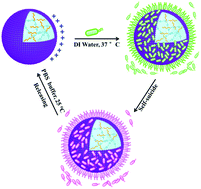
Mater. Horiz., 2020,7, 157-163
https://doi.org/10.1039/C9MH00976K
Inherently self-sterilizing charged multiblock polymers that kill drug-resistant microbes in minutes
To combat the growing global healthcare threat from drug-resistant pathogens, we demonstrate that midblock-sulfonated block polymers can kill 99.9999% of “superbugs,” including bacteria and viruses, in just 5 minutes due to an abrupt pH reduction.
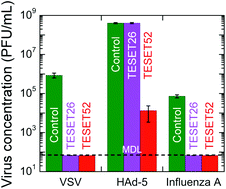
Mater. Horiz., 2019,6, 2056-2062
https://doi.org/10.1039/C9MH00726A
Bacterial flagella as an osteogenic differentiation nano-promoter
Flagella detached from the surface of bacteria can promote stem cell differentiation in osteogenic medium.
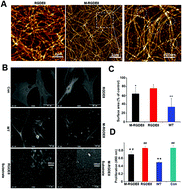
Nanoscale Horiz., 2019,4, 1286-1292
https://doi.org/10.1039/C9NH00124G
Disease-specific protein corona sensor arrays may have disease detection capacity
Protein corona sensor array technology identifies diseases through specific proteomics pattern recognition.
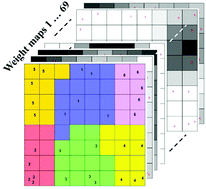
Nanoscale Horiz., 2019,4, 1063-1076
https://doi.org/10.1039/C9NH00097F
Nanoscale antiadhesion properties of sophorolipid-coated surfaces against pathogenic bacteria
By means of single-cell force nanoscopy we show that sophorolipid biosurfactants feature unusually strong antiadhesion properties against nosocomial pathogens involved in catheter-related infections.
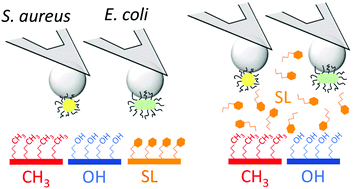
Nanoscale Horiz., 2019,4, 975-982
https://doi.org/10.1039/C9NH00006B
A tumor treatment strategy based on biodegradable BSA@ZIF-8 for simultaneously ablating tumors and inhibiting infection
Biodegradable BSA@ZIF-8 can treat cancer by tumor microwave ablation, while simultaneously inhibiting bacteria and resisting infection.

Nanoscale Horiz., 2018,3, 606-615
https://doi.org/10.1039/C8NH00113H
Visible light active nanofibrous membrane for antibacterial wound dressing
Hydrogel nanofibrous membranes that show visible light-induced disinfection are developed for wound dressing application.
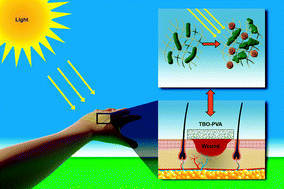
Nanoscale Horiz., 2018,3, 439-446
https://doi.org/10.1039/C8NH00021B
A programmable lipid-polymer hybrid nanoparticle system for localized, sustained antibiotic delivery to Gram-positive and Gram-negative bacterial biofilms
Lipid-polymer hybrid nanoparticle enhances antibiotic efficacy through localised, sustained delivery to bacterial biofilms.
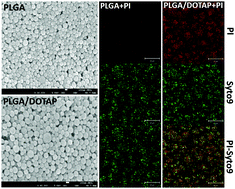
Nanoscale Horiz., 2018,3, 305-311
https://doi.org/10.1039/C7NH00167C
About this collection
Worldwide, the ever-growing threat of antimicrobial resistance calls for new strategies to tackle infection that go beyond the traditional use of antibiotics. The limited pipeline of drug candidates is unable to provide new-generation antibiotics at the pace resistances are being acquired and spread amongst microorganisms. Likewise, the development of advanced technologies to prevent host colonisation and specific pathogen diagnosis are more necessary than ever. Guest Edited by Materials Horizons and Nanoscale Horizons Community Board members Ignacio Martín-Fabiani, Loughborough University, United Kingdom, and Ignacio Insua, Universidade de Santiago de Compostela, Spain, this collection showcases the most recent advances in the prevention, diagnosis, and treatment of infections using novel strategies at the interface between chemistry, physics, biology and nanotechnology.